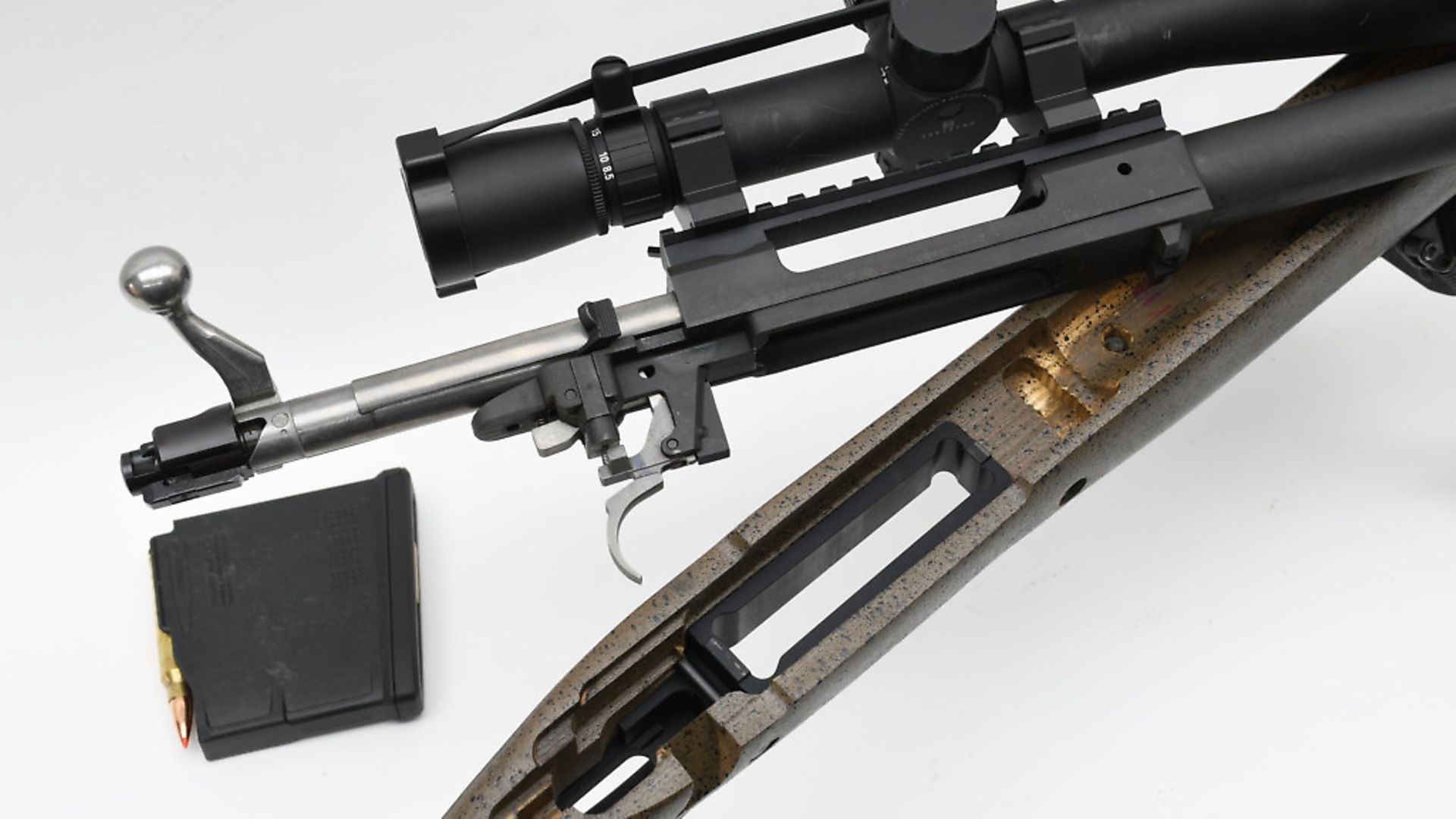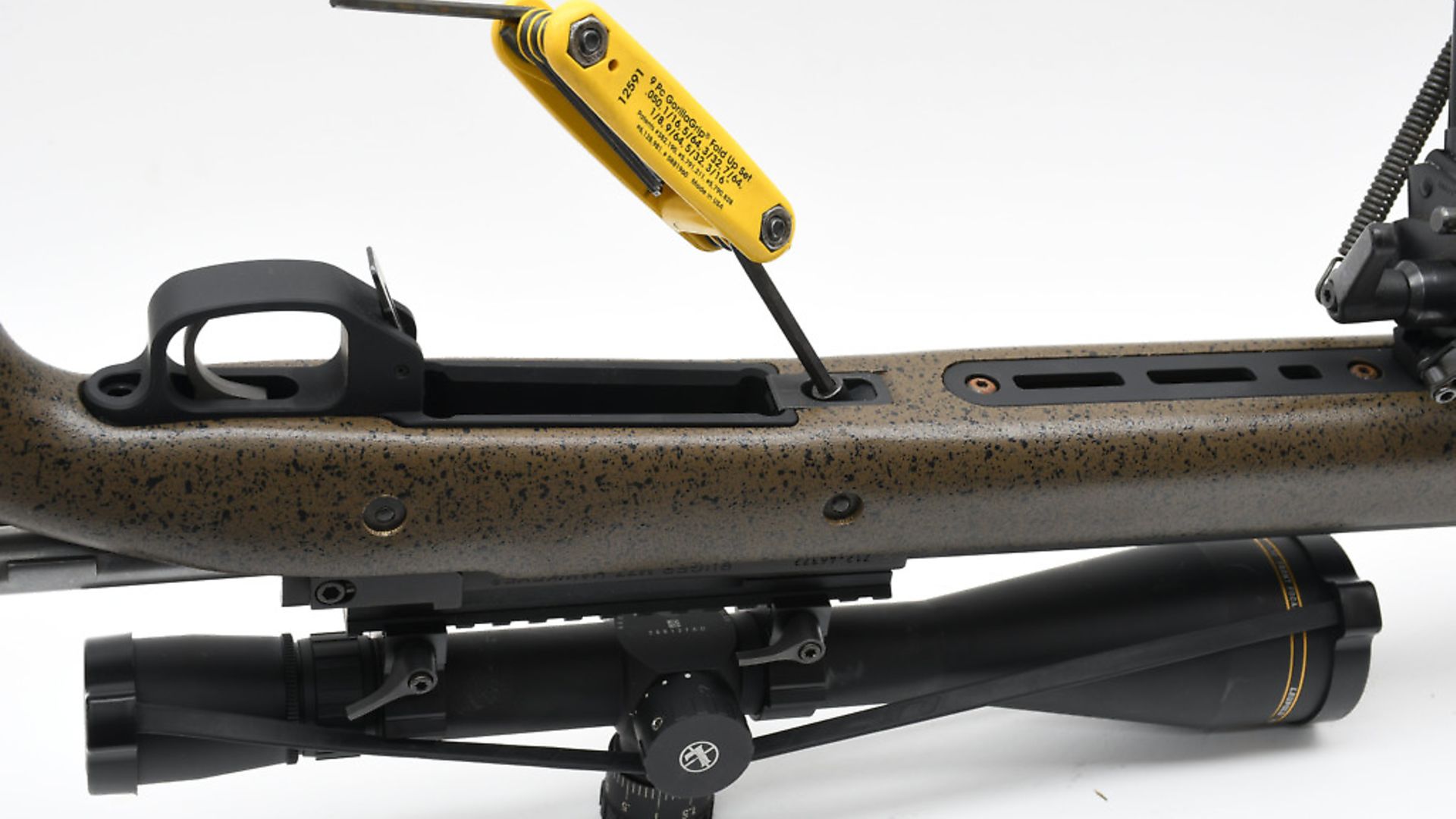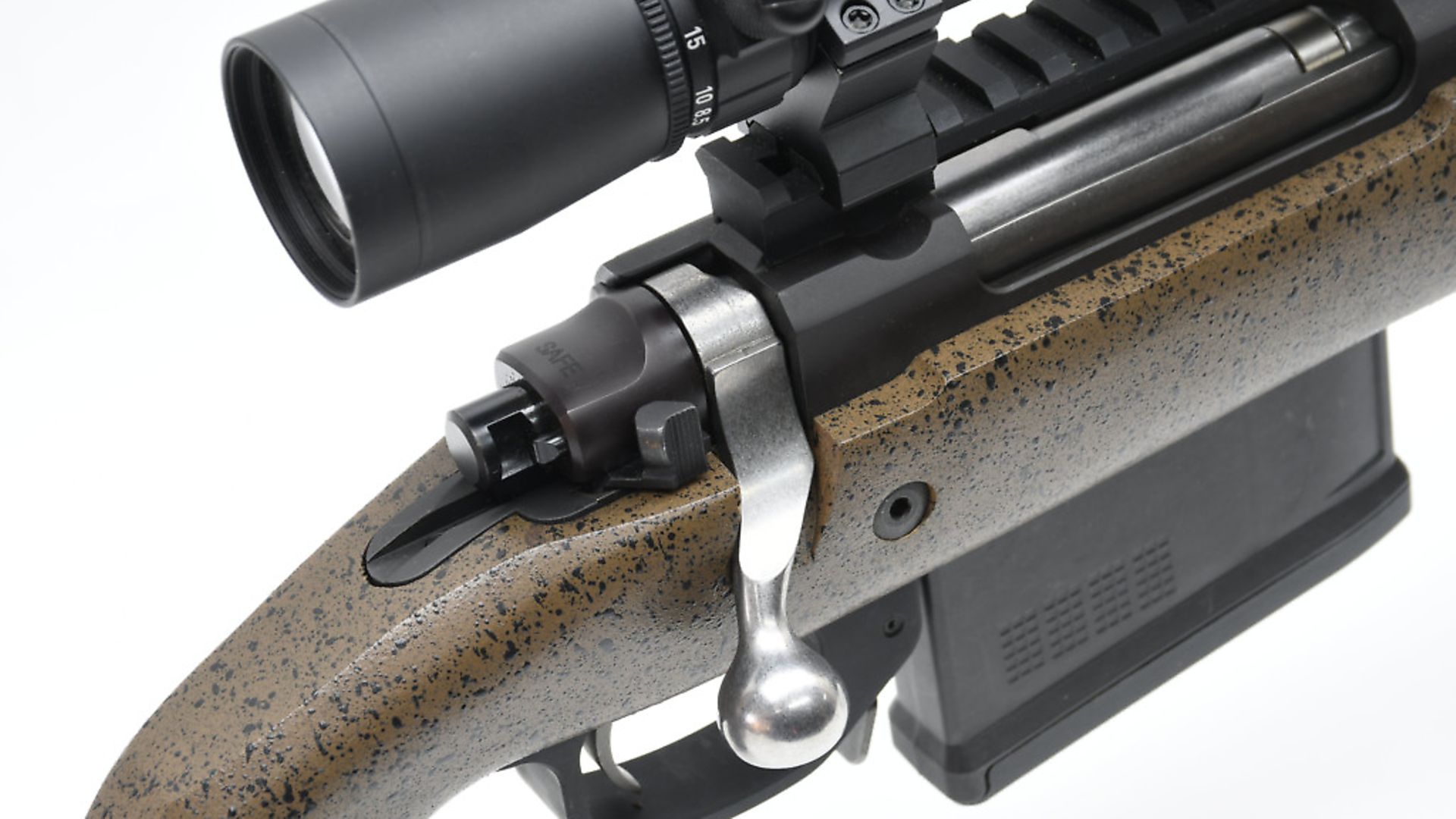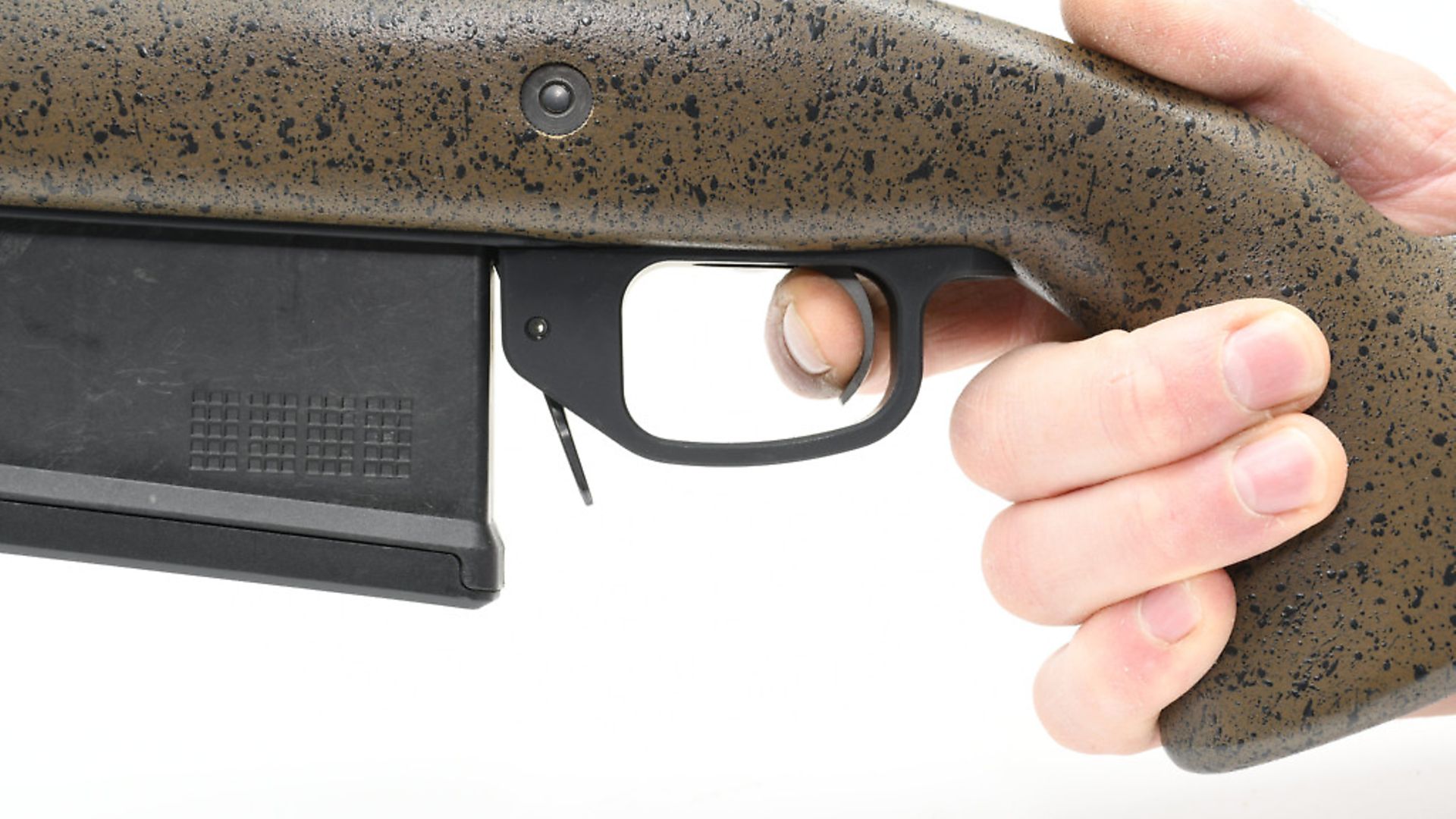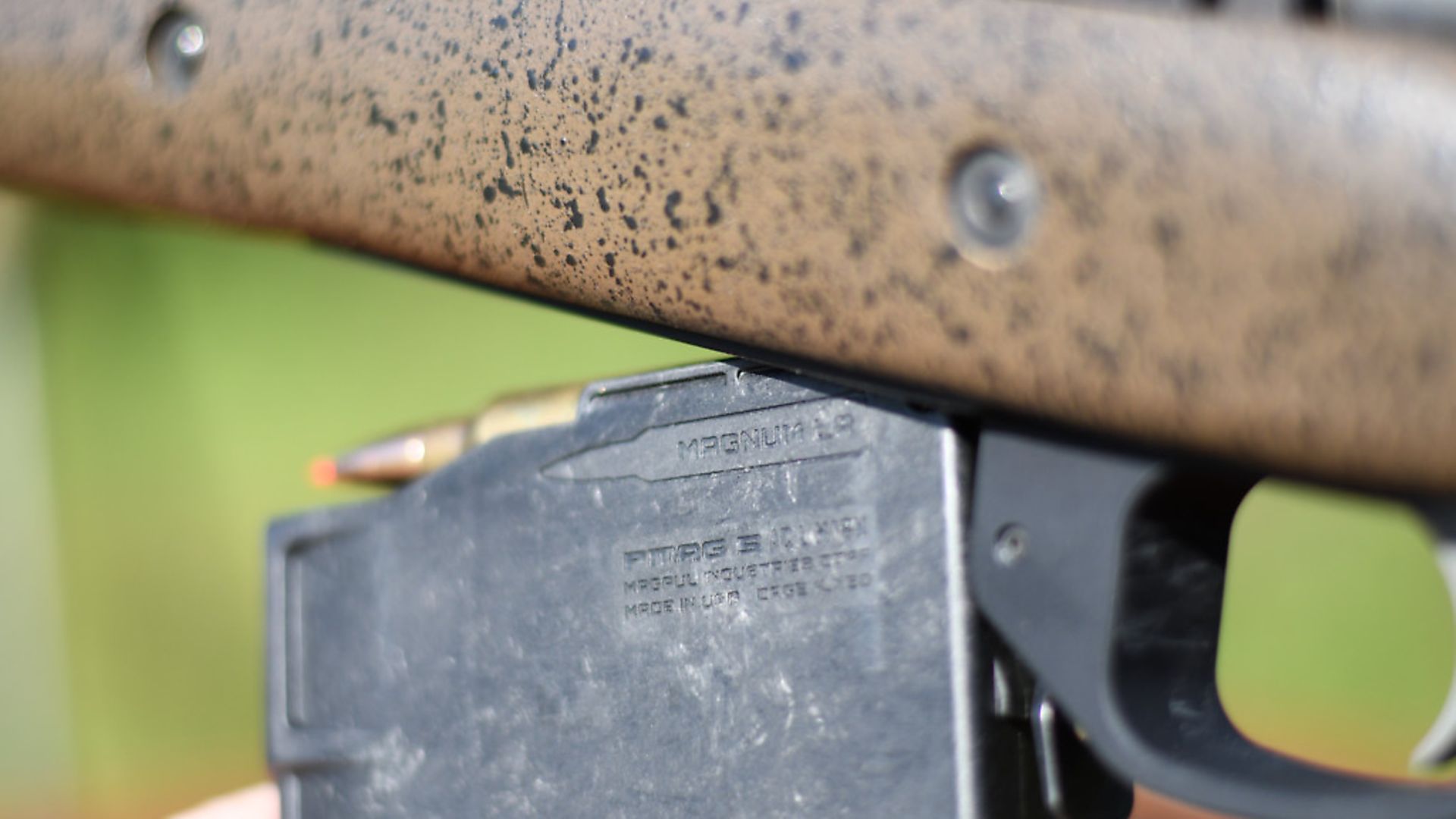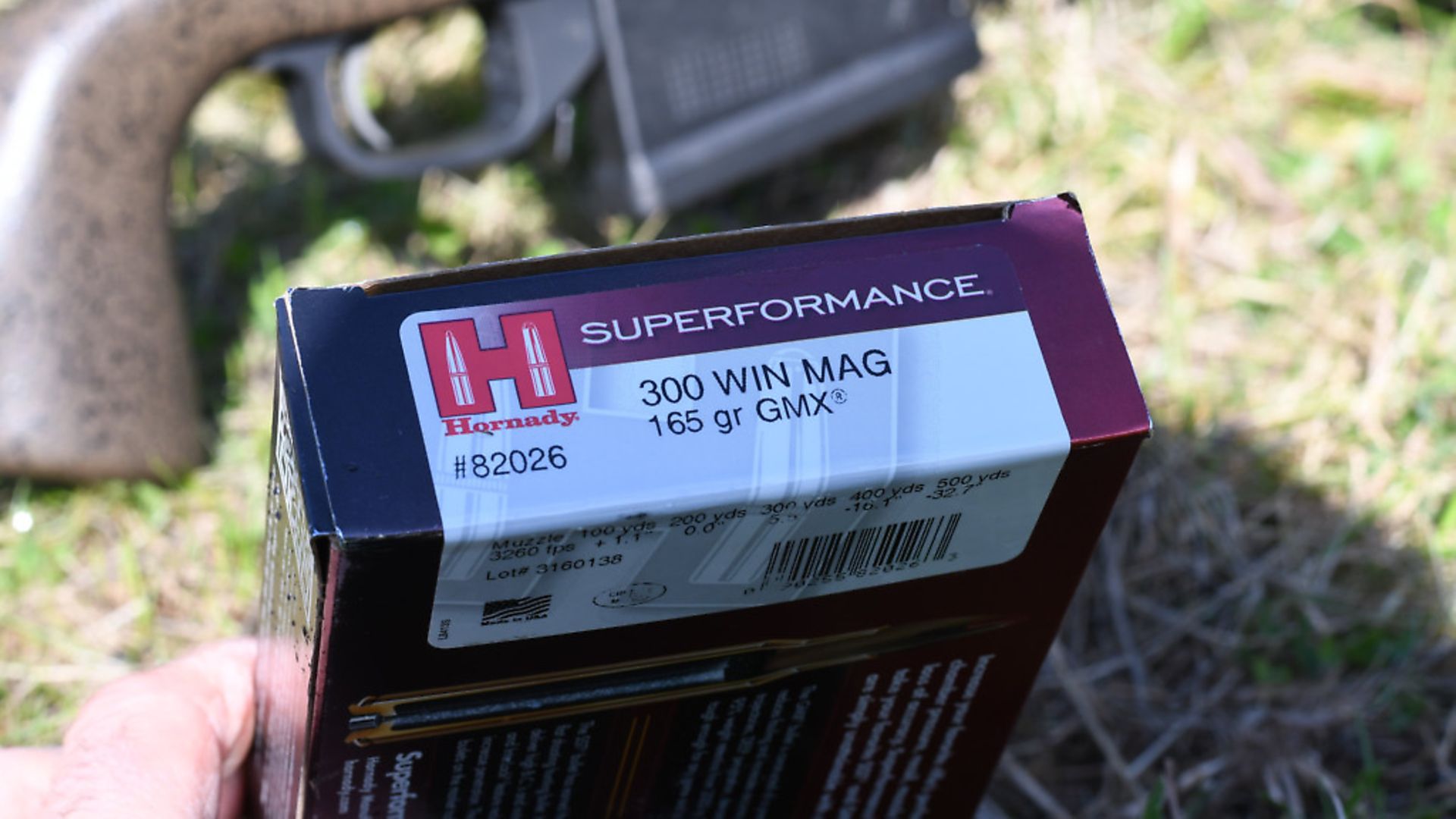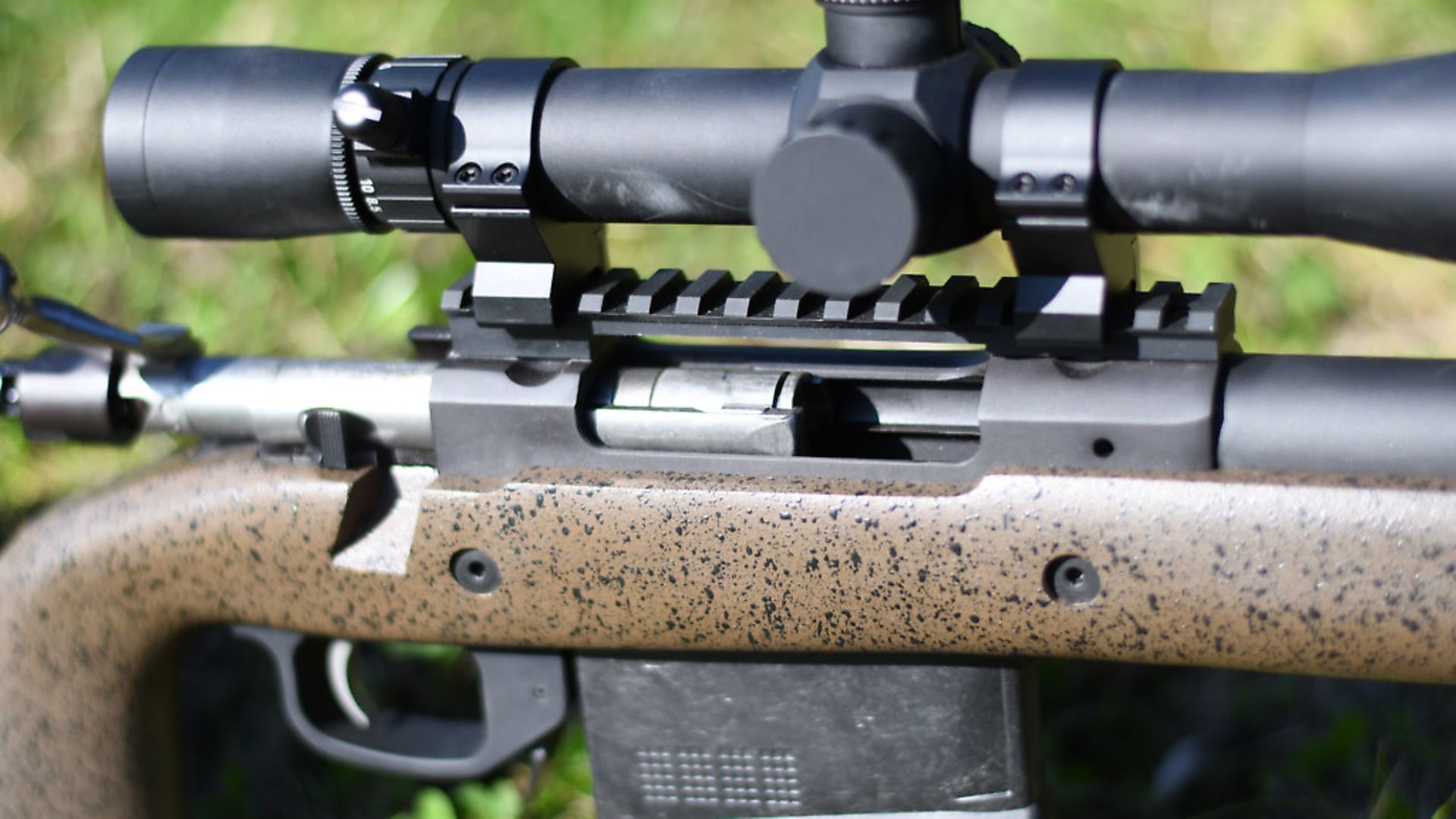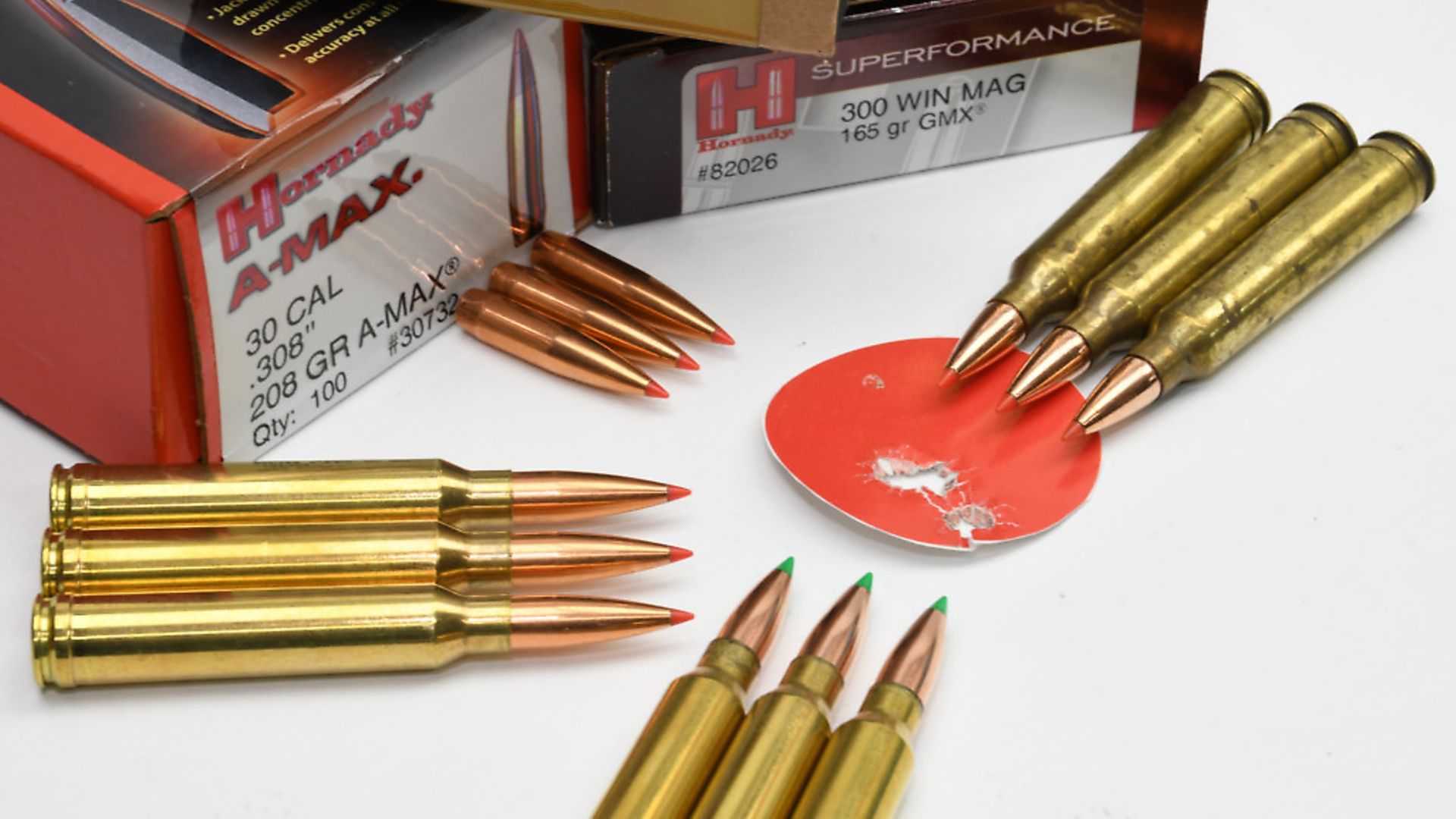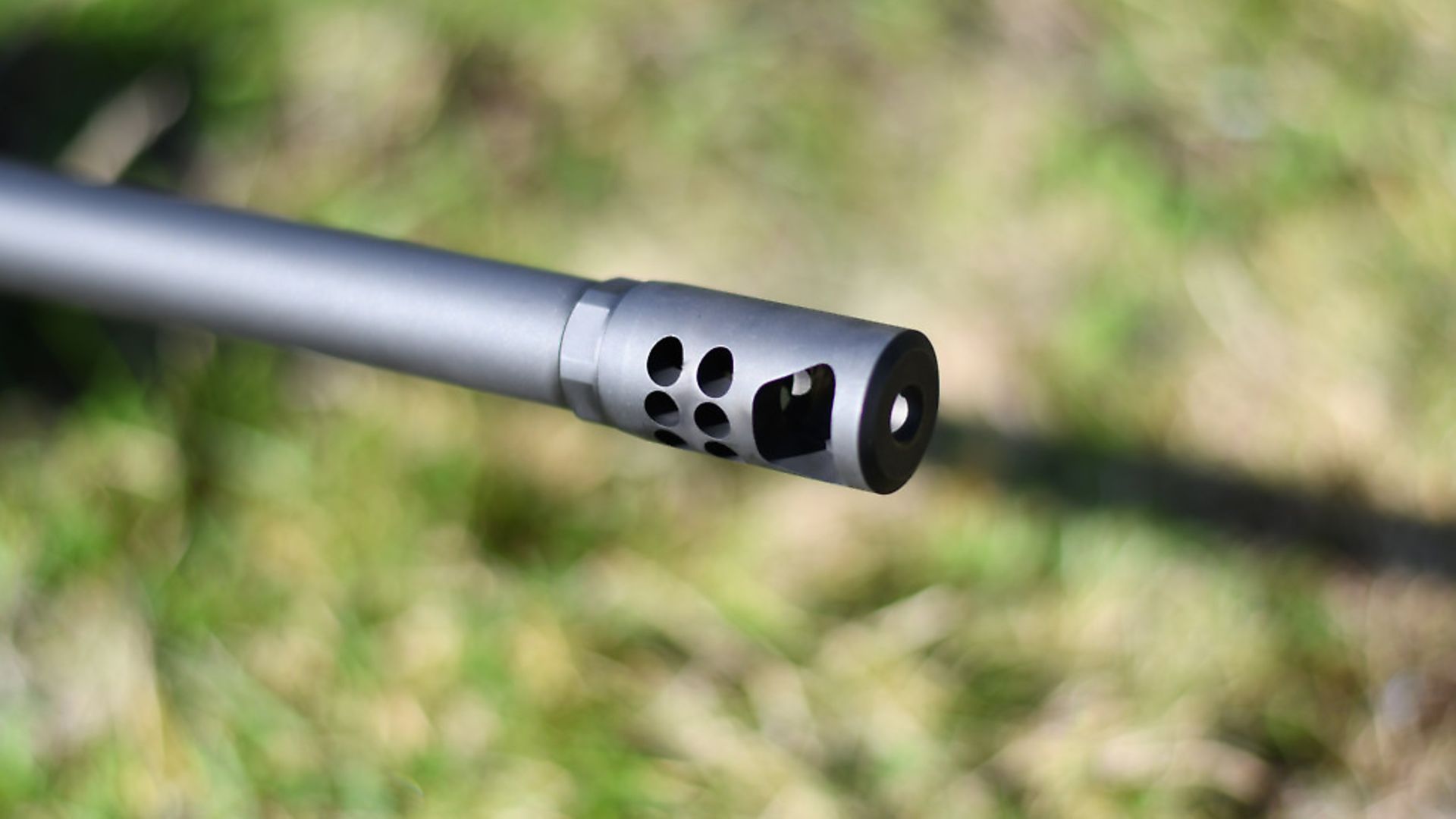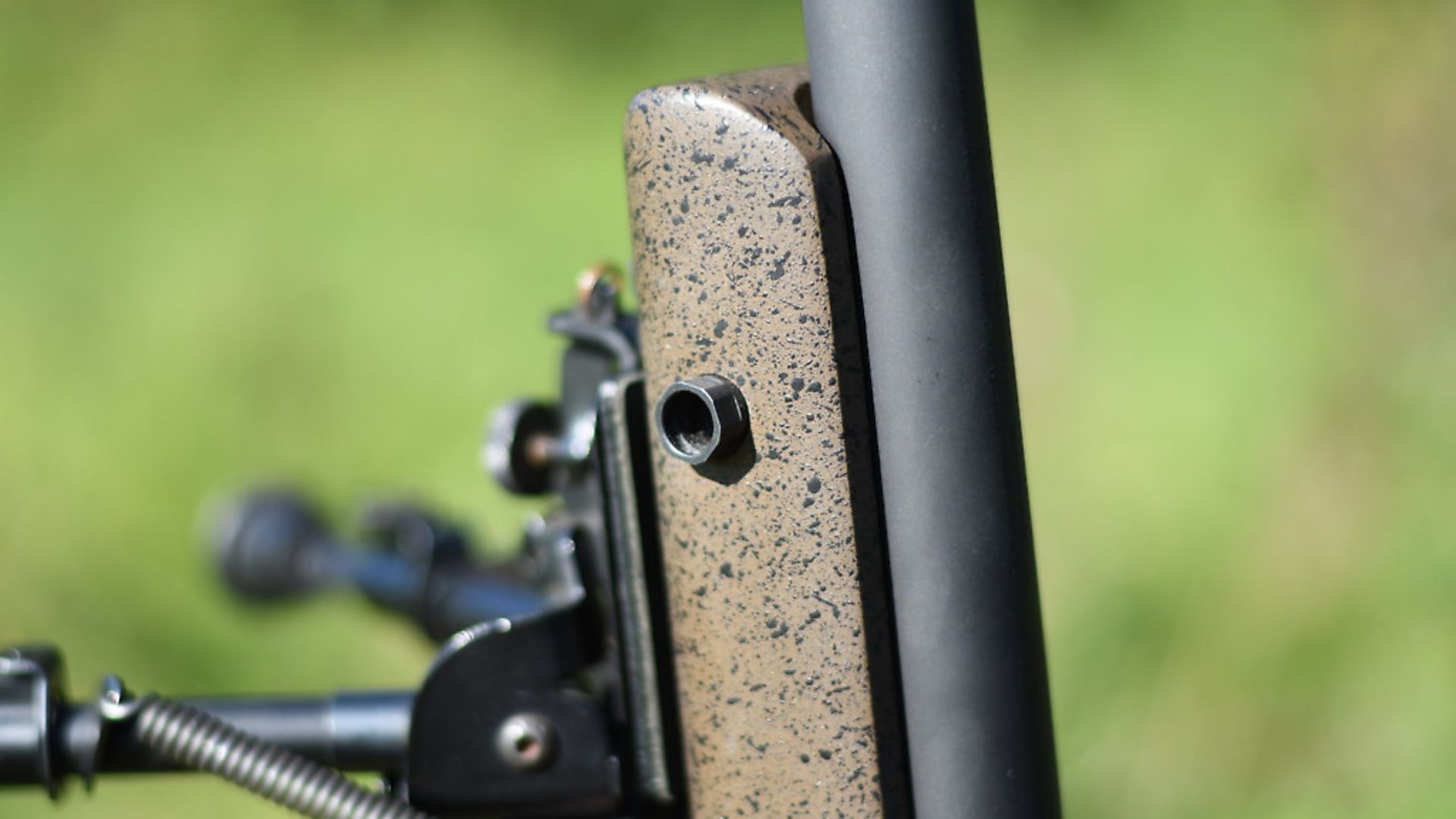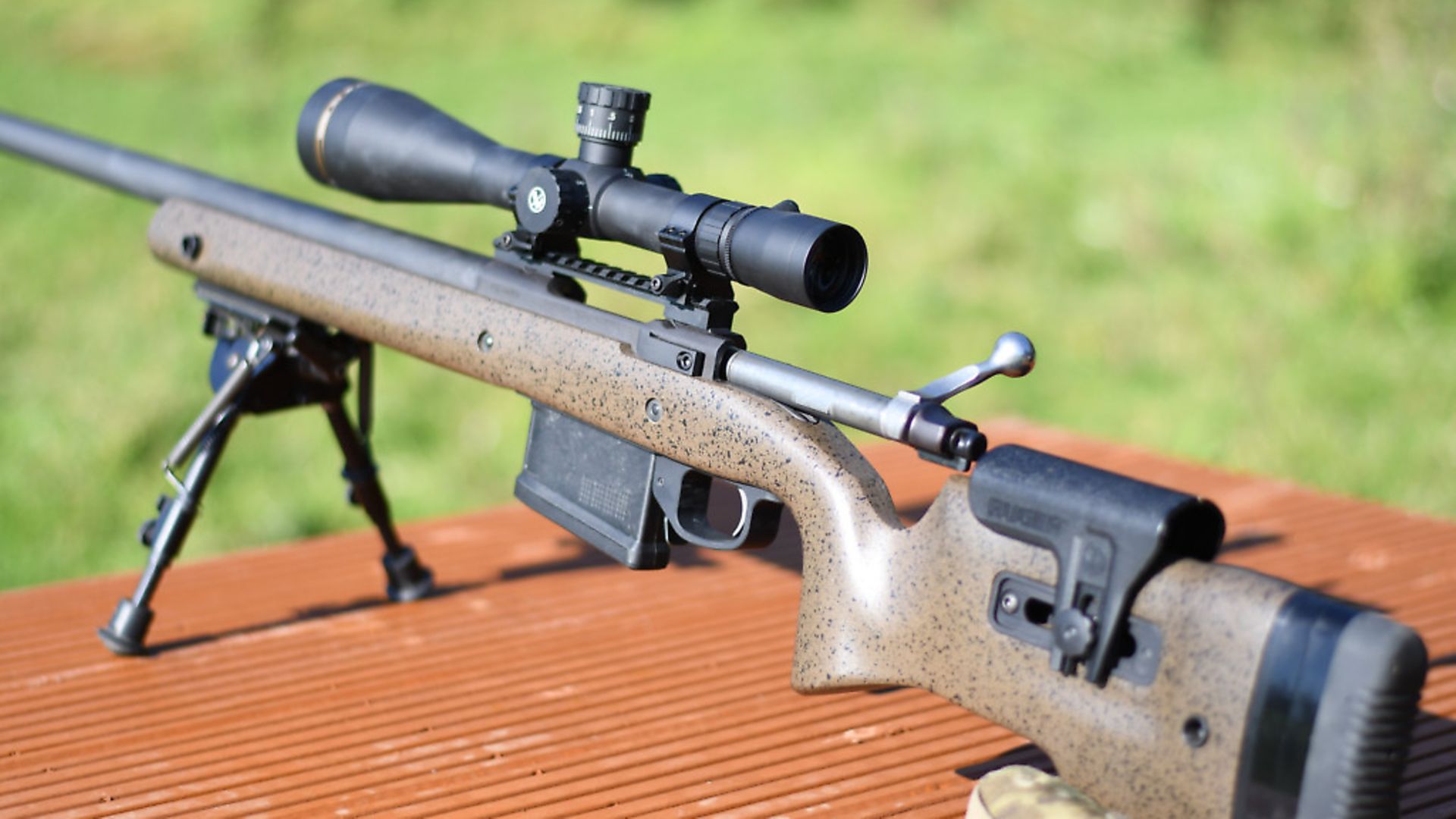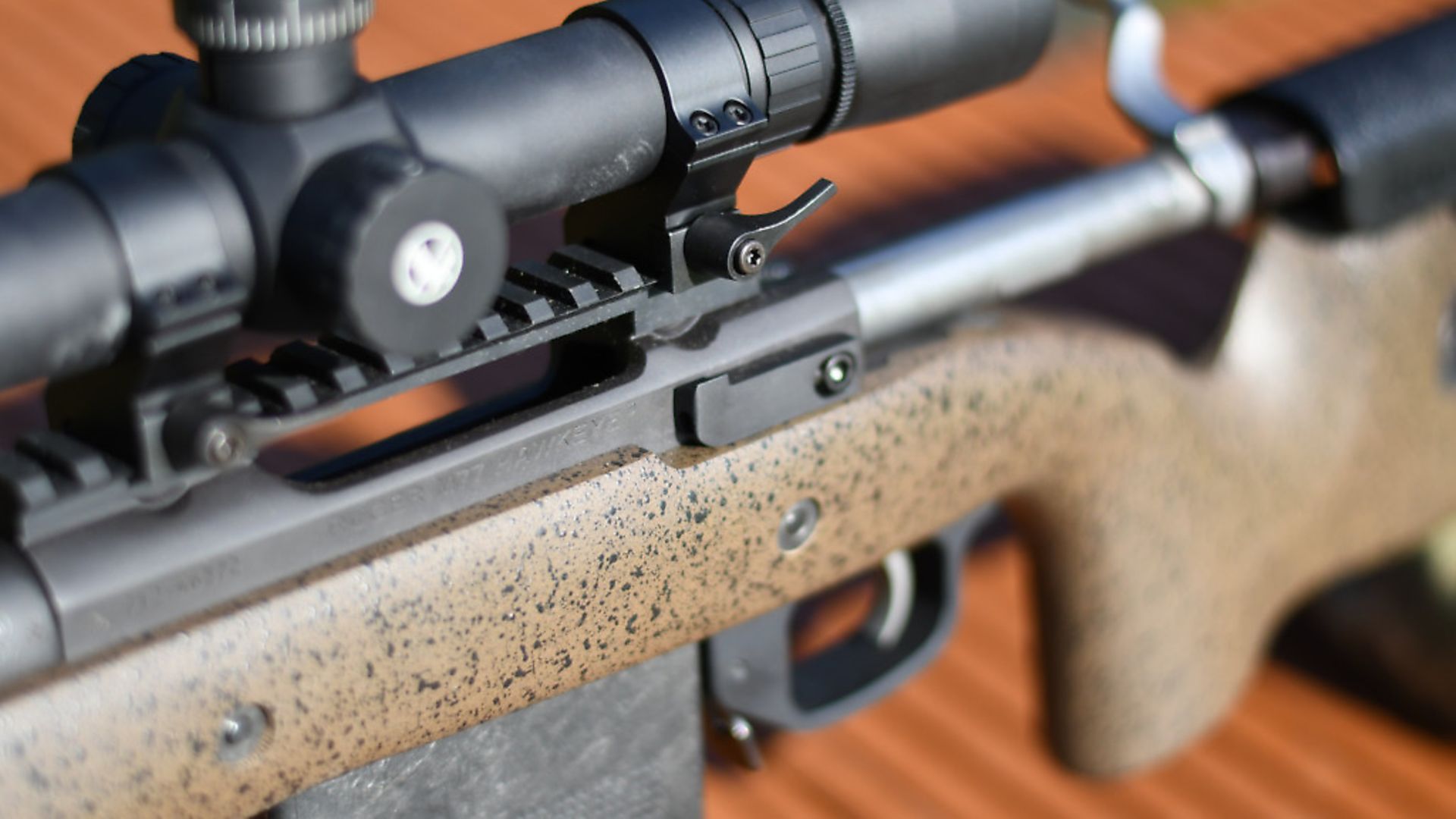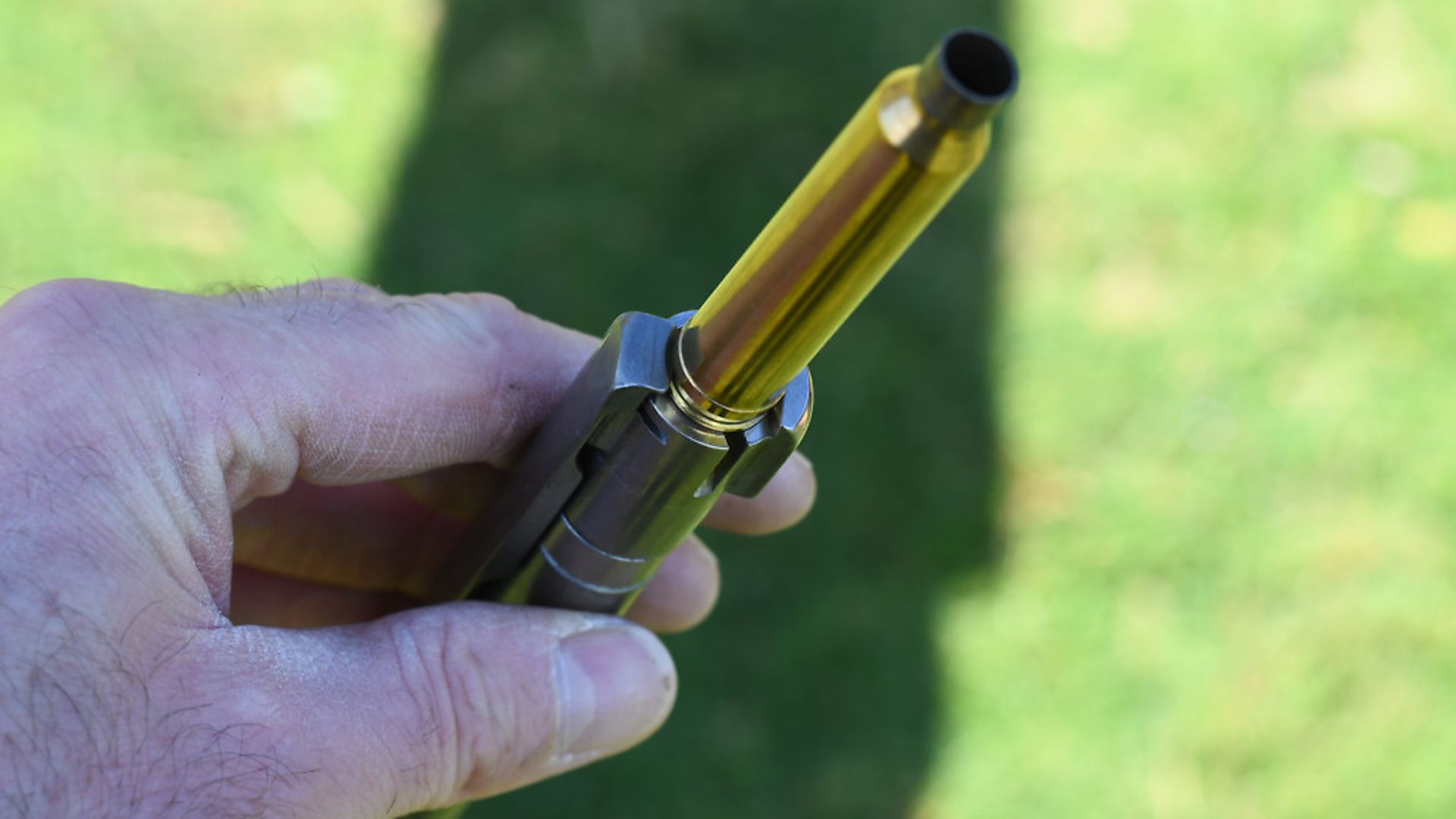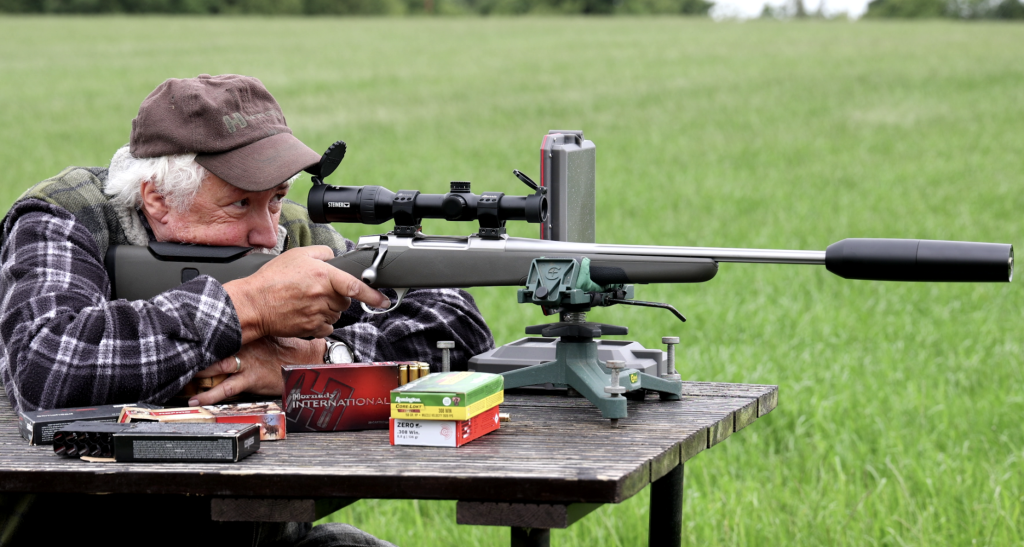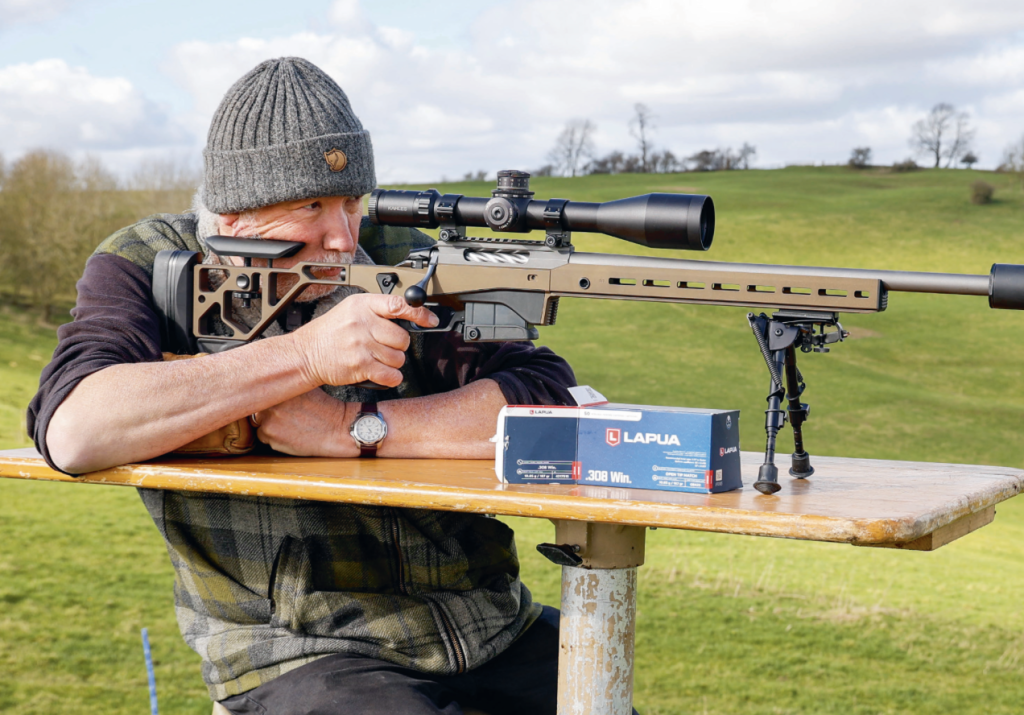Ruger M77 Hawkeye Long Range Target in 300 Win Mag – test & review
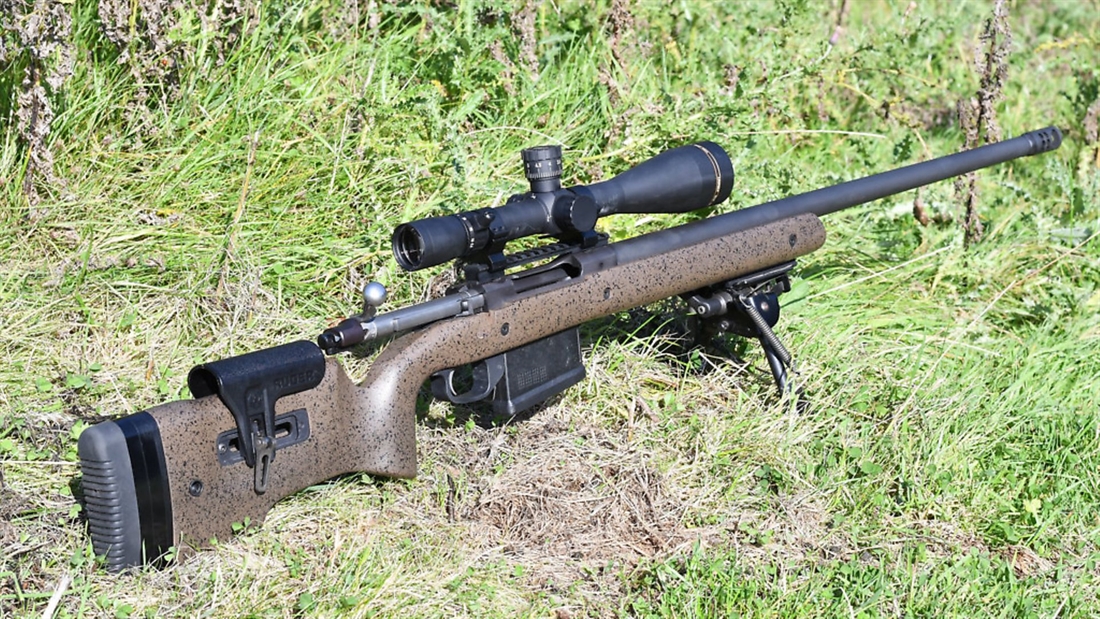
Chris Parkin gets back behind one of the big boys and enjoys Ruger’s latest long-ranger in a classic composite, rather chassis stock – meet the M77 Hawkeye LRT in 300 Win Mag!
Ruger M77 Hawkeye Long Range Target in 300 Win Mag – brief overview
LIKES: The LRT showed immediate performance on target; Easily cleaned barrel showed minimal metallic fouling; Excellent trigger feel; Brake is very efficient for recoil control (but there are no free lunches…); If the `300` can be handled with good manners, any 6.5mm rounds are plain sailing
DISLIKES: Trigger guard is a bit bulky and shrouds the blade too much; Underside M-Lok rail screws have corroded easily; I hate brakes and had concussion from 40 rounds fired
VERDICT: The M77 LRT achieves the goal it set out for. It has given reliable performance on target and with the brake removed, shows firm but well controlled recoil characteristics appropriate to the cartridge’s intrinsic energy. Large calibres exacerbate poor manners and given the capability of the rifle; I think the Ruger is well worth a look for fans of controlled feed actions in the 6.5 Creedmoor who don’t want a chassis
Calibre: 300 Win mag on test (also available in 6.5 Creedmoor, 6.5 PRC)
Overall length: 1206-1244mm/47.5-49″
Weight: 5.0kg/11lbs
Length of Pull: 330-368mm/13-14.5″
Magazine capacity: 5 round detachable (+1 in the chamber)
Trigger: Two stage adjustable 1120gr/2.5lb pull
Barrel length (twist rate): 660mm-26″ heavy barrel (1 in 9″)
Scope mounting: Drilled and Tapped, 20 M.O.A. Picatinny rail included
Stock: composite
SRP: £1,735
Contact: Viking Arms www.vikingarms.com 01423 780810
ALSO USED
Hornady Ammunition
Edgar Brothers www.edgarbrothers.com 01625 613177
Ruger M77 Hawkeye Long Range Target in 300 Win Mag – IN DEPTH TEST & REVIEW
Ruger’s Hawkeye has now arrived in the long-range target format, with calibres primarily chosen for ballistic capability. My test rifle is chambered in the old long-range hunting favourite, .300 Winchester Magnum. The LRT is also available in the omnipresent 6.5 Creedmoor and newer 6.5 PRC. PRC is the latest hot 6.5 and will certainly outperform the Creedmoor on pure velocity alone but that will always represent a sacrifice in barrel life. The PRC variant also only offers a three-round magazine capacity versus the .300’s 5 and Creedmoor’s 10.
Muzzle velocity is well catered for with the LRT’s 26″ barrel. We see a lot of shorter bores these days on hunting rifles, but I still feel the longer tube, regardless of specific rifle, offers better accuracy as well as velocity from factory ammunition. This is more of a gut feeling given the broad range of rifles I get to try out.
.300s are all about speed, usually generating around 300-400 fps more than a .308 shooting the same bullet at the cost of 30-40% more powder within a long action, belted magnum case. I personally own a .300 and love it to bits when I need to put energy on target, but no longer use it for paper or steel – there are softer recoiling options for a day of fun shooting, but were I culling, it would still be my choice over open windy terrain.
Weighing in at 5kg/11lb, it’s good to see that heavy profile barrel’s weight being the focus on a rifle intended for long-range. It starts out with Ruger’s laterally ported Rifle Hybrid muzzle brake to cut recoil and it certainly does that, but at the appreciable cost of noise and blast wave coming back at the shooter. All steelwork is finished matt black with an almost parkerised effect shrouding the discreet looks that contrast well with the black/brown speckled composite stock.
Yes, it is a true composite, stiff, sturdy and freely floats the barrel without any hollow echo when bumped around. The cold hammer forged tube’s 1 in 9″ twist is a great factor for stabilising the ultra-heavy .30 cal bullets, being beyond 220gr for a high ballistic coefficient. A 5R rifling pattern showed smooth internals without any pre-existing craters or excessive machine marks through the borescope.
It certainly didn’t require a significant amount of shooting in. Ruger promise minimal chamber headspacing, an important factor benefitting accuracy and case life for precision reloaders on any firearm, especially so on belted magnums. A moderator can be swapped for the brake on the muzzle’s 5/8″x24 thread if so desired.
Form and function
Ruger’s action shows a non-rotating Mauser-type full-length extractor claw combined with a controlled feed bolt face. I do feel that this design, although reliable, harks back in time to actions of old and is more of a stylised selling point than functional requirement. Push-feed actions now rule the roost across most brands, including Ruger’s RPR and American series of rifles. It is a question of style perhaps?
The stainless steel bolt is made in a single piece for strength with two locking lugs and 90° lift to open. All ammo was fed smoothly and little bolt exertion was required with plentiful extraction force in primary and secondary stages. The rear shroud shows a three-stage lever safety, forward for fire with rearward locking the bolt and firing pin, with an intermediate stage for safe bolt cycling.
Ammunition is fed from a five-round single-column P-Mag design following the Accuracy International AICS pattern for long-action cartridges. P-Mags perform well, feed slickly and quietly but this one is a snug fit in the aluminium underside bottom metal and although smooth to insert when unloaded, swells fractionally when stuffed with five live rounds and becomes a little tighter.
This may lessen as the anodising wears in a bit, but I noted the stiffer feel during use. The mag’s release catch sits to the front of the spacious trigger guard allowing plenty of space for gloved fingers, however the slim 6mm trigger blade does feel a little lost within the guard. The grip is on the small side, well matched to a 13″ length of pull with short reach to trigger with no palm swell to fill your hand. It’s easy to feel more trigger guard on your finger than blade itself and I think a broader unit spaced a little further forward would have felt better.
Given the capability to extend length of pull for taller shooters, I would have scaled the grip a little larger. I like rifles made adaptable to suit a broader range of shooter sizes but there seems little point ignoring the grip, making it a ‘small’ rather than a ‘medium’, in my opinion. The trigger is a twin-stage unit, adjustable and pretty crisp to use, but as you squeezed through the first stage and came into contact with more trigger guard, it diminished feel for the blade itself. Pulls on the second of the two-stage unit weighed consistently within 20gr either side of 1120gr.
A true composite stock is fitted to the LRT, not an injection-moulded polymer and this starts off a good path for action support. The action shows a flat bottom with incorporated recoil lug to engage with the neatly machined bedding area of the inlet. The bottom metal is made in two interlocking parts and there is a secondary steel lug inlaid under the front action screw’s head to engage the 45° up and forward forces that tension the recoil lug back against its pocket in the inlet.
Everything fits snugly and in line so no drifting barrel fit or action stress, it’s a great job, perhaps a little overcomplicated from a manufacturing efficiency standpoint but certainly a good mechanical design that proved proficient in this heavy recoiling calibre.
The Ruger really pleased me being a great critic of stock/action bedding interfaces, the only odd point is the totally dissimilar action screws that need two Allen key sizes. The fore-end’s underside shows a neatly installed M-Lok rail for bipod accessories plus a conventional stud for a Harris-type bipod or sling with a 95mm section of Picatinny rail.
All fasteners feature steel anchors bonded within the stock and there are twin steel lateral reinforcers fore/aft of the magazine well to aid longevity and preventing the stock splitting lengthways. Ruger supply a 20 MOA Picatinny rail screwed in four places to the action, larger than the norm they’re a pleasant feature allowing any scope to remain securely attached.
The LRT’s vertical pistol grip hangs rearward, as said perhaps a little on the small side, but usable and with vertical thumb support to the rear of the action’s tang. It shows a slender inbuilt comb running parallel to the bore with additional wrap over adjuster offering both vertical and linear movement. Adjusters can be swapped left to right and the rollover cheekpiece can be flipped to extend its overhang forward or rearward, tallying well with the stock’s length of pull adjustability and allowing bolt removal without fuss.
The locking lever does have a few small parts so it’s best not to completely release the spring tension on the screw thread in the field. Length of pull adjustment is achieved with solid 12.5mm spacers placed between the rubber recoil pad and stock, reaching 355mm/14″ with two of the three supplied. The uniform recoil pad, with no soft or hard spots, features lateral ribs to prevent it slipping in your shoulder.
Both sides of the butt show QR sling stud anchor points with a third on the left side of the forend’s tip that can be swapped to the right. A further conventional stub is anchored on the butt’s underside which features a nice flat surface for soft bag support and a butt hook to get a grip on the rifle and/or bag.
Off to the range
I don’t like muzzle brakes for various reasons, so when the first two boxes of ammunition showed fundamentally capable performance, I was happy to back away with only minor concussion. Brakes are noisy, fairly easy to counter with 27dB protection from earplugs in addition to 33dB Peltor ear defenders, but the pressure wave that blasts through your head, although not physically painful, is wearing and I have learned to quit while I’m ahead.
I shoot my .300 moderated or ‘naked’ for a very good reason, so as soon as the gun was proven in factory set-up I took the brake off. Brakes are superb for cutting recoil and allowing you to spot impact splash or animal reaction but if it is bad for you, anyone close by gets it even worse!
Hornady’s 165gr BTSP is a capable performer, pushing 2967 fps to generate 3210 ft/lbs with almost MOA groups on paper was OK through the run-in process. Later, Hornady ammo showed three round groups on paper below 20mm at 100m with peak performance dropping to 14.3mm/0.565″ which is a great starting point from a new barrel shooting factory ammo.
The GMX is rated to 3260 fps on the box with a real-world figure of 3086 fps recorded at the range. With a hunting bullet of G1 Ballistic Coefficient 0.447, this offers supersonic ability to 1,100m. Go for one of the higher BC match bullets like the ELD-M at 225gr and with a 0.777 figure. Pushed with handloads at an estimated 2700 feet per second from that long barrel would add another 500m on targets dependant on powder capability.
I used a few rounds of my handloads and found these performed well in the barrel, improving the groups on paper to a standard 16mm for five round clusters with 2872 fps over the chronograph. These were not developed for this rifle, nor were they optimum in any way showing the intrinsic capability of the Ruger barrel and stock with its linear recoil path and minimal muzzle jump.
Shot from a bipod, with the brake off, it rekindled my fondness for the .300 and I dug out a few 180gr Nosler Ballistic tips, which were a fond hunting favourite on sika in Ireland, where deer had to be dropped on the spot, otherwise easily lost into deep gullies and bogs.
When I first tested the Bergara B14 HMR, it was an immediate success because it mimicked an almost formalised concept for long-range ergonomics with dimensions closely approximating the McMillan A5. The Ruger not only looks but adheres closely to this concept and although different to the Bergara in several ways, latches onto a winning formula.
In 6.5 Creedmoor, it would make a very interesting head-to-head test with push-feed versus controlled-feed bolts, single-stage versus two-stage triggers, wrapover cheekpiece versus adjustable comb etc – to me, that is what rifle reviews should be about.
With the brake removed, although recoil is up, I enjoyed shooting the rifle far more and remembered the feeling of learning to control recoil and its effects on accuracy, regardless of range. Keeping my head down while cycling the bolt and eyes on target while re-adjusting aim for a following shot are all skills much harder to learn with more recoil and long action cartridges, but once learned, sow the seed deeply for greater capability with cartridges of lesser ferocity. Train hard, fight easy.
Related Articles
Get the latest news delivered direct to your door
Subscribe to Rifle Shooter
Elevate your shooting experience with a subscription to Rifle Shooter magazine, the UK’s premier publication for dedicated rifle enthusiasts.
Whether you’re a seasoned shot or new to the sport, Rifle Shooter delivers expert insights, in-depth gear reviews and invaluable techniques to enhance your skills. Each bi-monthly issue brings you the latest in deer stalking, foxing, long-range shooting, and international hunting adventures, all crafted by leading experts from Britain and around the world.
By subscribing, you’ll not only save on the retail price but also gain exclusive access to £2 million Public Liability Insurance, covering recreational and professional use of shotguns, rifles, and airguns.
Don’t miss out on the opportunity to join a community of passionate shooters and stay at the forefront of rifle technology and technique.



